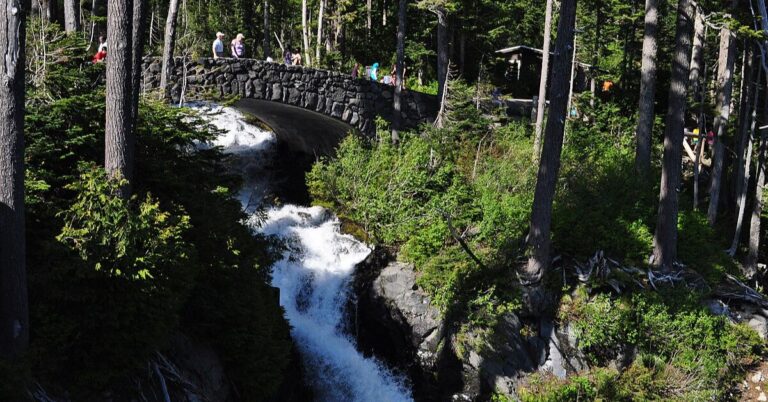25 Underground Sanctuaries Of Forgotten Chambers
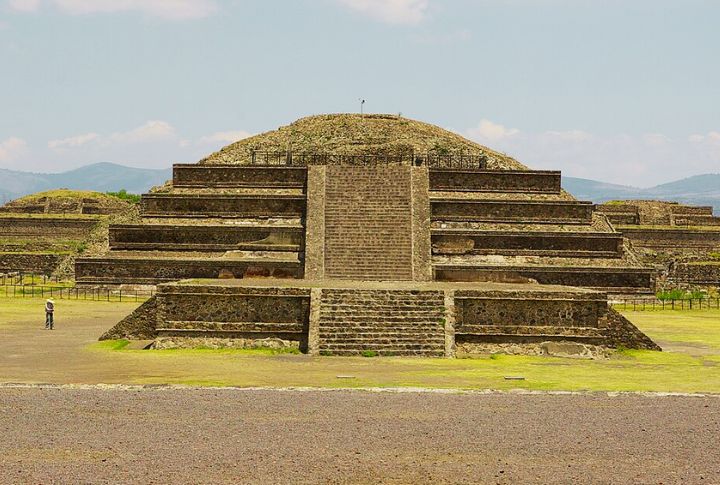
Deep underground, ancient temples and hidden catacombs still sit in silence. Built long ago, they’ve stayed untouched by time and light. Some were made for worship, others to honor the departed. Their stories haven’t faded—they’re just more challenging to reach. Here are some of the most remarkable ones ever uncovered.
Catacombs Of San Callisto, Rome, Italy

Timeworn burial tunnels run below Rome, where early Christians laid their departed. San Callisto’s catacombs reach nearly 20 kilometers, including the Crypt of the Popes. The chambers, carved in the 2nd century AD, preserve frescoes and symbols that reflect the quiet strength of early faith during Roman rule.
Saint Kinga’s Chapel, Wieliczka, Poland

Salt walls glimmer inside this subterranean church, carved by miners deep within the Wieliczka Salt Mine. Dedicated to Saint Kinga, the chapel features chandeliers made from rock salt and detailed carvings of biblical scenes. Mass is still held here, hundreds of feet underground, surrounded by shimmering salt crystals.
Actun Tunichil Muknal, Belize
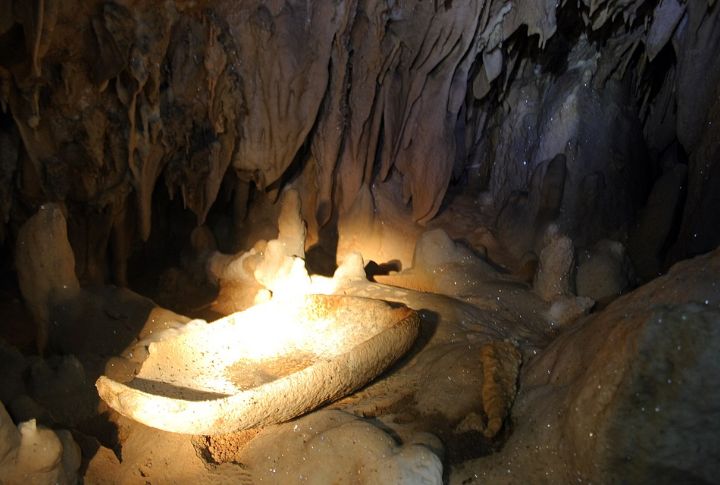
A thick jungle leads to a cave system used by the ancient Maya. Archaeologists found ceremonial altars, pottery, and human remains believed to have been sacrificed. One skeleton, dubbed the Crystal Maiden, sparkles from centuries of mineral buildup. The site was a sacred space for powerful and mysterious rituals.
Catacombs Of Kom El Shoqafa, Alexandria, Egypt
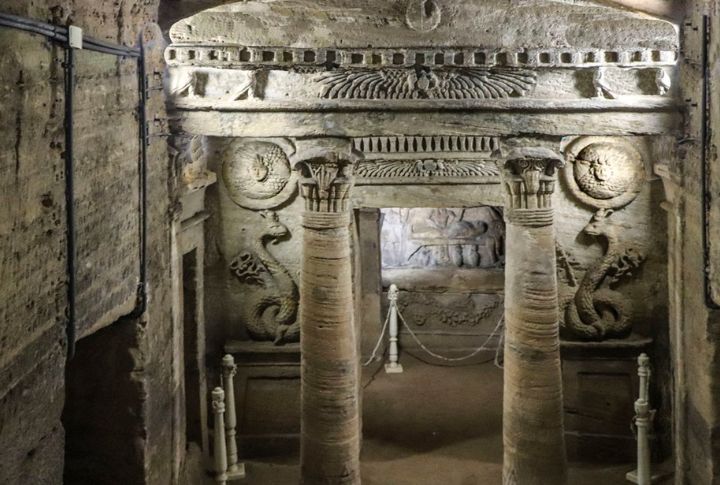
Carved tombs and columns reflect Egyptian and Greco-Roman styles across these multi-level chambers. Discovered in 1900, Kom El Shoqafa includes a spiral staircase leading to a hidden necropolis. In addition to human remains, one chamber known as the “Hall of Caracalla” contains horse bones linked to a massacre in 215 AD.
Derinkuyu Underground City, Turkey
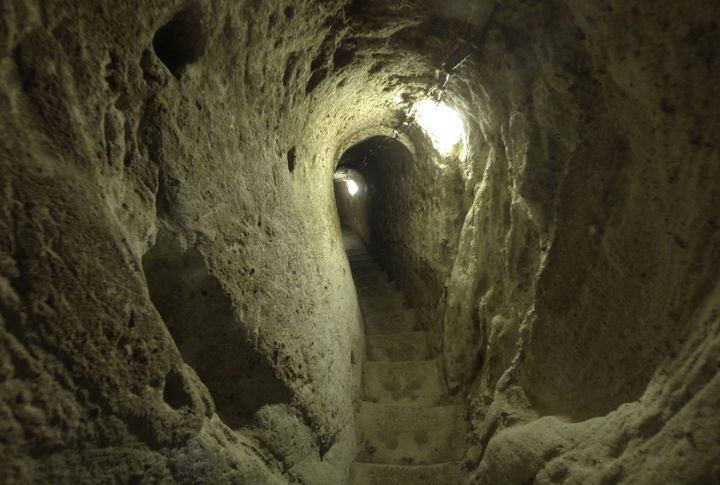
Tunnels snake downward for eight levels beneath Cappadocia’s surface, forming an ancient refuge for up to 20,000 people. Derinkuyu includes chapels, kitchens, wells, and air shafts, all designed for extended survival. Circular stone doors could seal off entrances, shielding entire communities from attack while life continued in the dark below.
Salt Cathedral Of Zipaquira, Colombia
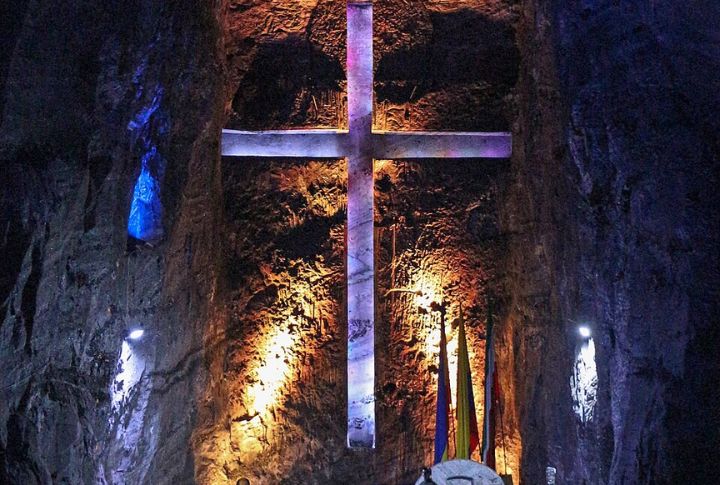
A vast cathedral carved from solid halite inside a working salt mine near Bogota stands in solemn stillness. Crosses and altars stretch along a dimly lit path nearly 200 meters underground. The space hosts regular services and attracts visitors with its solemn beauty and the sheer scale of its subterranean devotion.
Temples Of Humankind, Damanhur, Italy
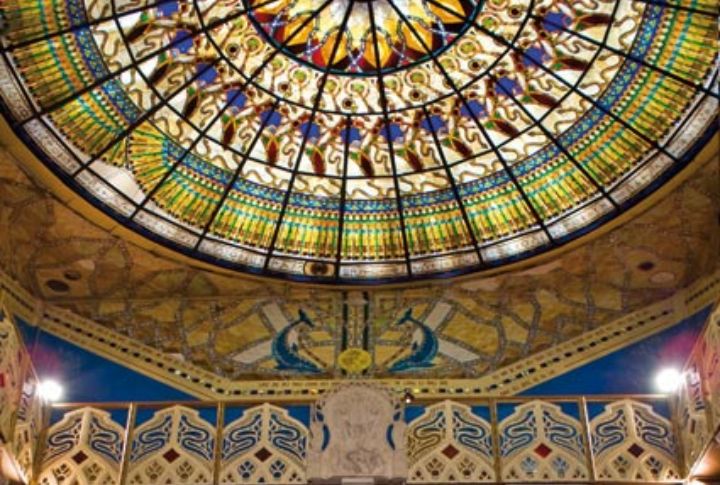
This modern temple complex, conceived in secrecy beneath the Alps in 1978, was hand-excavated by members of the Damanhur spiritual community. Intricately decorated halls represent elements like water and earth. Though modern, the space honors ancient symbolism, spirituality, and mystery—hidden until Italian authorities discovered it in the ’90s.
Phraya Nakhon Cave, Thailand

Light filters through a collapsed roof to reveal a royal pavilion built for King Rama V. This remote cave, reachable only by foot and boat, houses a sacred site within a vast limestone chamber. The quiet glow and lush green framing give it an ethereal, almost otherworldly presence.
Meroe Royal Tombs, Sudan

Beneath the pyramids of Meroe, steep stairs lead to rock-cut burial chambers used by the Kushite kings and queens. Walls feature inscriptions linking royalty with divine powers. Though smaller than Egypt’s pyramids, these concealed tombs reveal a blend of African and Egyptian religious beliefs in buried sanctity.
Catacombs Of Paris, France

Miles of tunnels run beneath Paris, filled with neatly stacked bones of over six million people. Originally part of an old limestone quarry, these tunnels became burial sites in the 18th century when cemeteries overflowed. Today, a small portion is open to visitors, though much of the maze remains sealed.
Bochnia Salt Mine Chapel, Poland
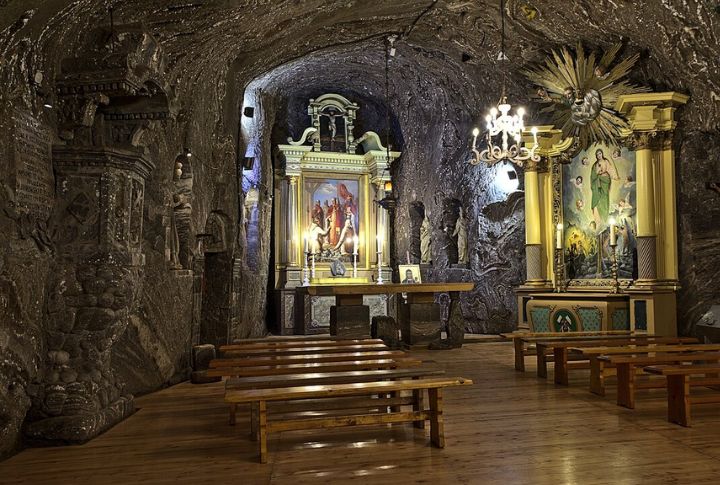
Older than Wieliczka, the Bochnia Salt Mine hides a centuries-old chapel carved into rock salt. The space, situated nearly 300 meters beneath the surface, includes religious sculptures, altars, and wooden pews. Pilgrims and tourists descend for worship and guided tours inside one of Europe’s oldest working mines.
Mitla Underground Chambers, Mexico
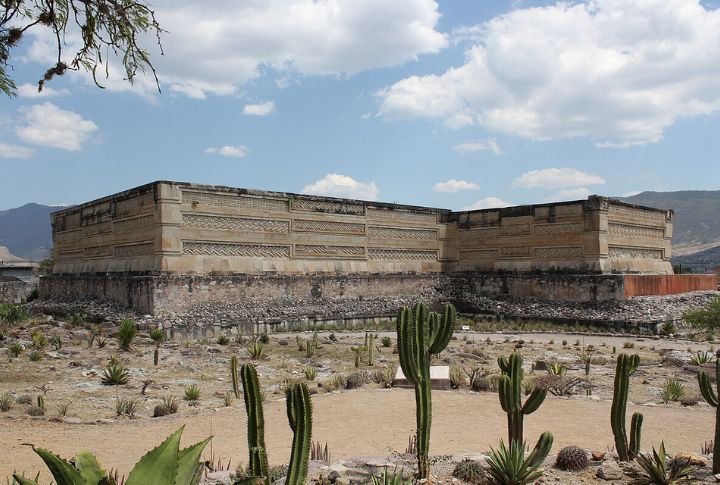
Zapotec priests believed these tunnels led to the underworld. Deep underneath Mitla’s surface, burial chambers feature intricate stone mosaics and symbolic geometric designs. Spanish missionaries later built churches above them. Rediscovered centuries later, these subterranean passageways still stir questions about their purpose and full extent.
Basilica Cistern, Istanbul, Turkey
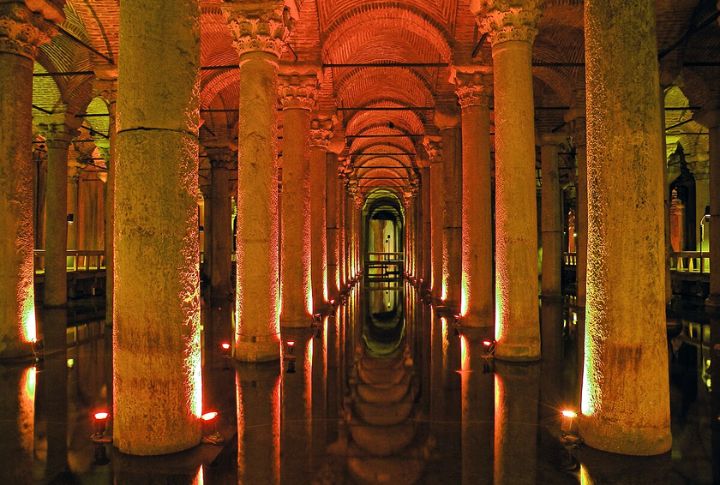
A forest of marble columns rises from the still waters of this ancient reservoir. Completed in the 6th century during Emperor Justinian I’s reign, the cistern once supplied water to the imperial palace. Two columns rest on carved Medusa heads, drawing curious glances in the eerie sunken light.
Znojmo Catacombs, Czech Republic
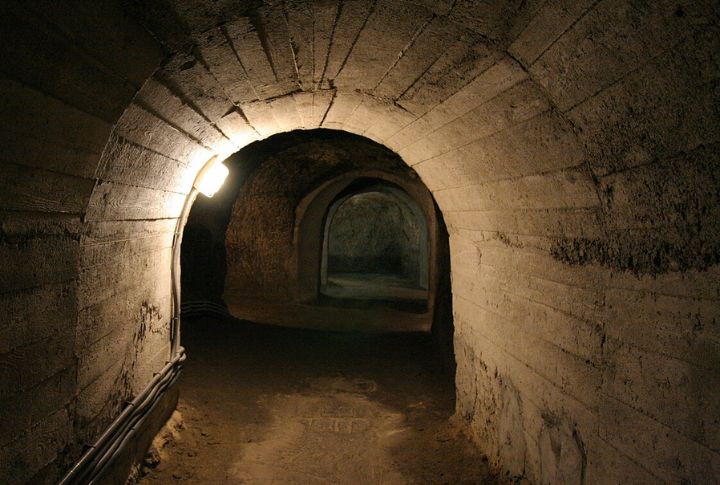
Passages stretch under the Moravian town of Znojmo, linking homes, cellars, and churches. Catacombs created in the 14th century allowed secret movement during sieges. Some chambers were used to bury the departed, while others supported daily life. Today, the tunnels remain a popular stop for history lovers.
Temple Of The Feathered Serpent Tunnel, Teotihuacan, Mexico
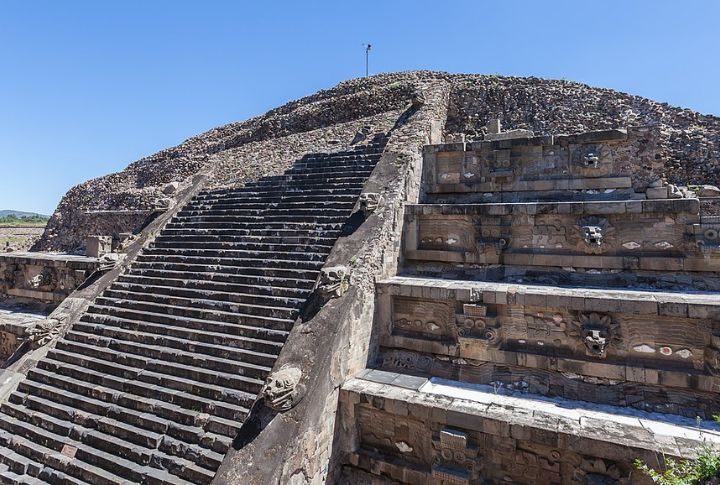
A sealed passage discovered in 2003 revealed hidden chambers beneath one of Teotihuacan’s main temples. Archaeologists found statues, offerings, and mysterious metallic spheres inside the tunnel. This sacred route, believed to represent the underworld, may have served initiation rites or spiritual ceremonies in one of Mesoamerica’s most influential cities.
Hypogeum Of Hal Saflieni, Malta
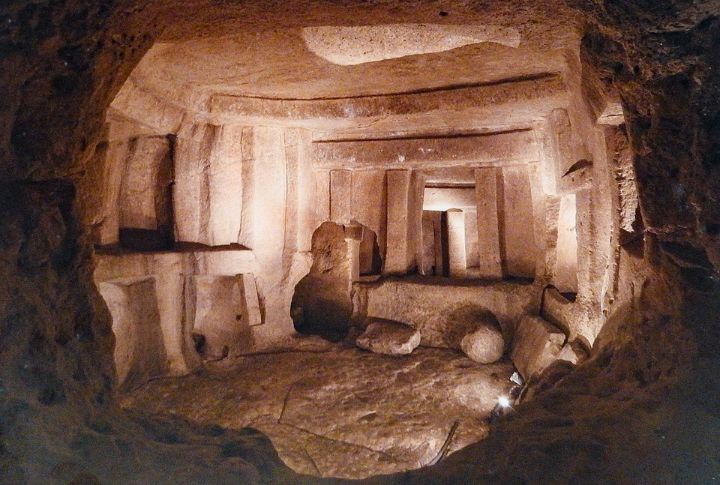
Chambers carved into limestone form a layered complex older than the pyramids. Believed to serve as a temple and tomb, the Hypogeum contains altars, oracle chambers, and red ochre wall art. One room creates an acoustic resonance that may have enhanced chants or ceremonies held thousands of years ago.
Catacombs Of Lima, Peru
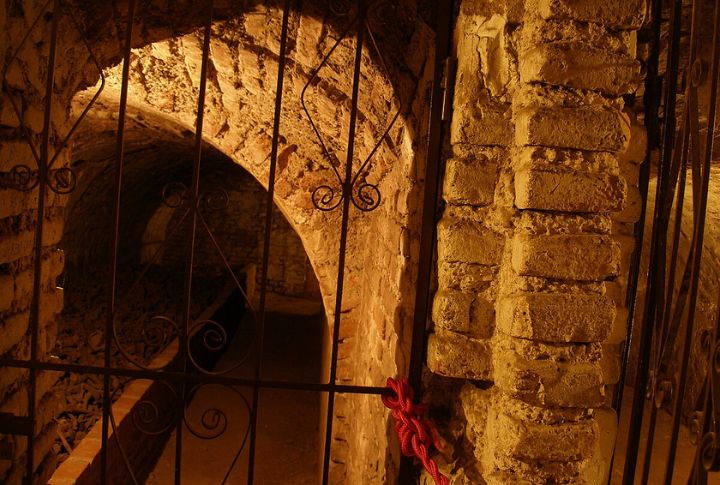
Concealed below the Convent of San Francisco in Lima, these catacombs were burial sites from the 16th to the 19th centuries. The bones are believed to be the remains of around 25,000 individuals. They sit in circular patterns within stone pits, giving a haunting glimpse into colonial-era practices.
Odessa Catacombs, Ukraine

Spanning more than 1,500 miles, the labyrinth under Odessa forms one of the longest maze-like tunnel networks ever created. The catacombs, carved initially from limestone mines, became a refuge for resistance groups and later served strategic purposes during the Soviet era. Only a small portion is open today.
Rock-Hewn Churches Of Lalibela, Ethiopia
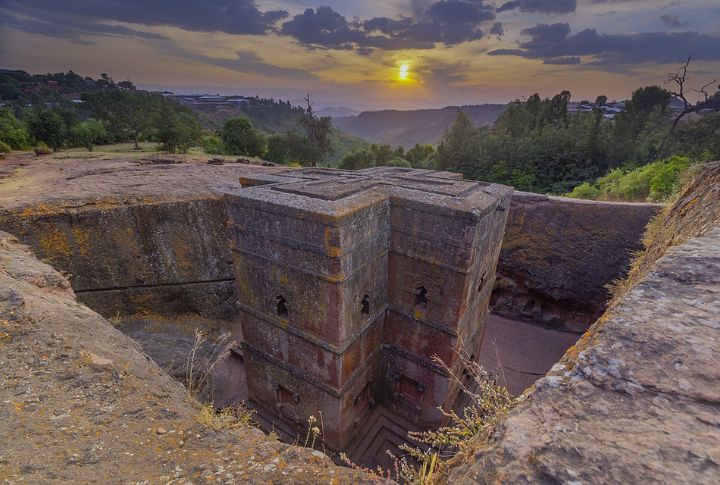
Monolithic churches lie carved straight from volcanic rock in northern Ethiopia. Constructed in the 12th century under King Lalibela’s rule, these 11 interconnected sanctuaries were designed to mimic Jerusalem. Cross-shaped roofs, underground passageways, and elaborate interiors reflect deep devotion and engineering mastery in a remote mountain setting.
Capuchin Crypt, Rome, Italy
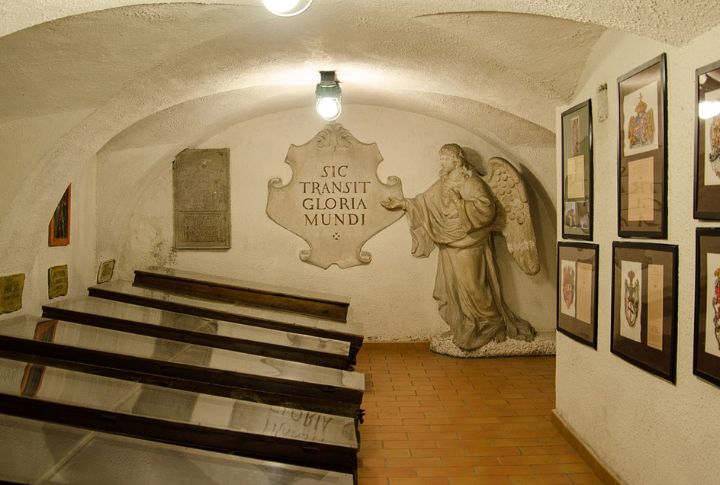
Six chapels beneath Rome’s Santa Maria della Concezione hold the carefully arranged bones of thousands of Capuchin friars. The remains are arranged in elaborate patterns and serve as decoration and a spiritual message. The crypt reflects the transient nature of life, artfully expressed through human skulls, femurs, and vertebrae.
Petra’s Subterranean Tombs, Jordan
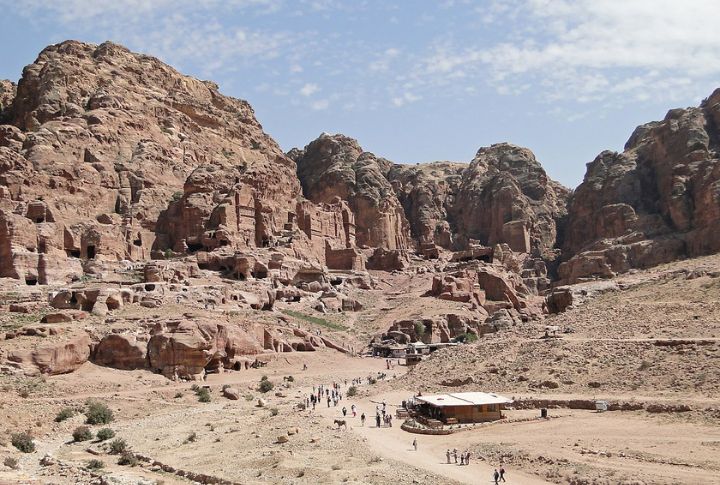
Behind Petra’s grand facades lie rock-carved tombs and burial chambers descending beneath the surface. Built by the Nabataeans over 2,000 years ago, these chambers housed royalty and elite families. Some connect through hidden tunnels.
Chavin De Huantar Temple Complex, Peru
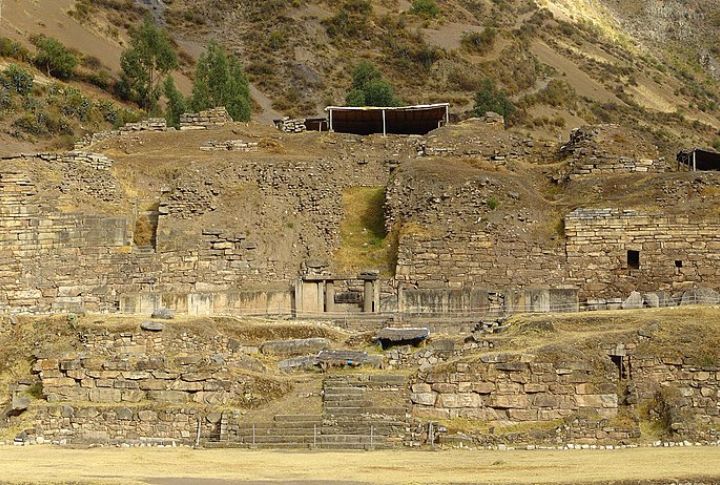
This timeworn Andean temple rests within a maze of narrow buried passageways and ceremonial chambers. Crafted by the Chavin culture around 900 BCE, the site includes a central gallery with the Lanzon, a carved granite idol thought to channel oracles. Sound-altering acoustics added to its ritual atmosphere.
Saint Paul’s Catacombs, Rabat, Malta

Located in Rabat, the St. Paul’s Catacombs are an extensive underground burial complex dating from the 3rd to the 8th centuries AD. These catacombs span over 2,000 square meters and feature intricate carvings and frescoes. They show the multicultural influences of Roman, Byzantine, and Punic traditions.
Tierradentro Hypogea, Colombia
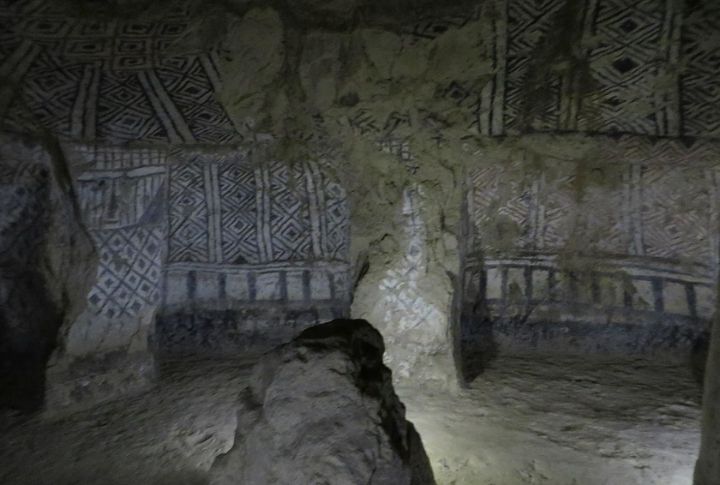
Tombs carved deep into the hills of southwestern Colombia contain painted chambers and symbolic engravings. Believed to belong to a pre-Hispanic culture from 600 to 900 AD, the Tierradentro Hypogea hold multiple sarcophagi and display rich geometric artwork, providing insight into funerary beliefs rarely found in the Americas.
Catacombs Of Priscilla, Rome, Italy

Known as the “Queen of the Catacombs,” the Catacombs of Priscilla date back to the 2nd century AD. They are notable for their extensive frescoes, including one of the earliest known depictions of the Madonna and Child. These catacombs served as burial sites for martyrs and popes.


